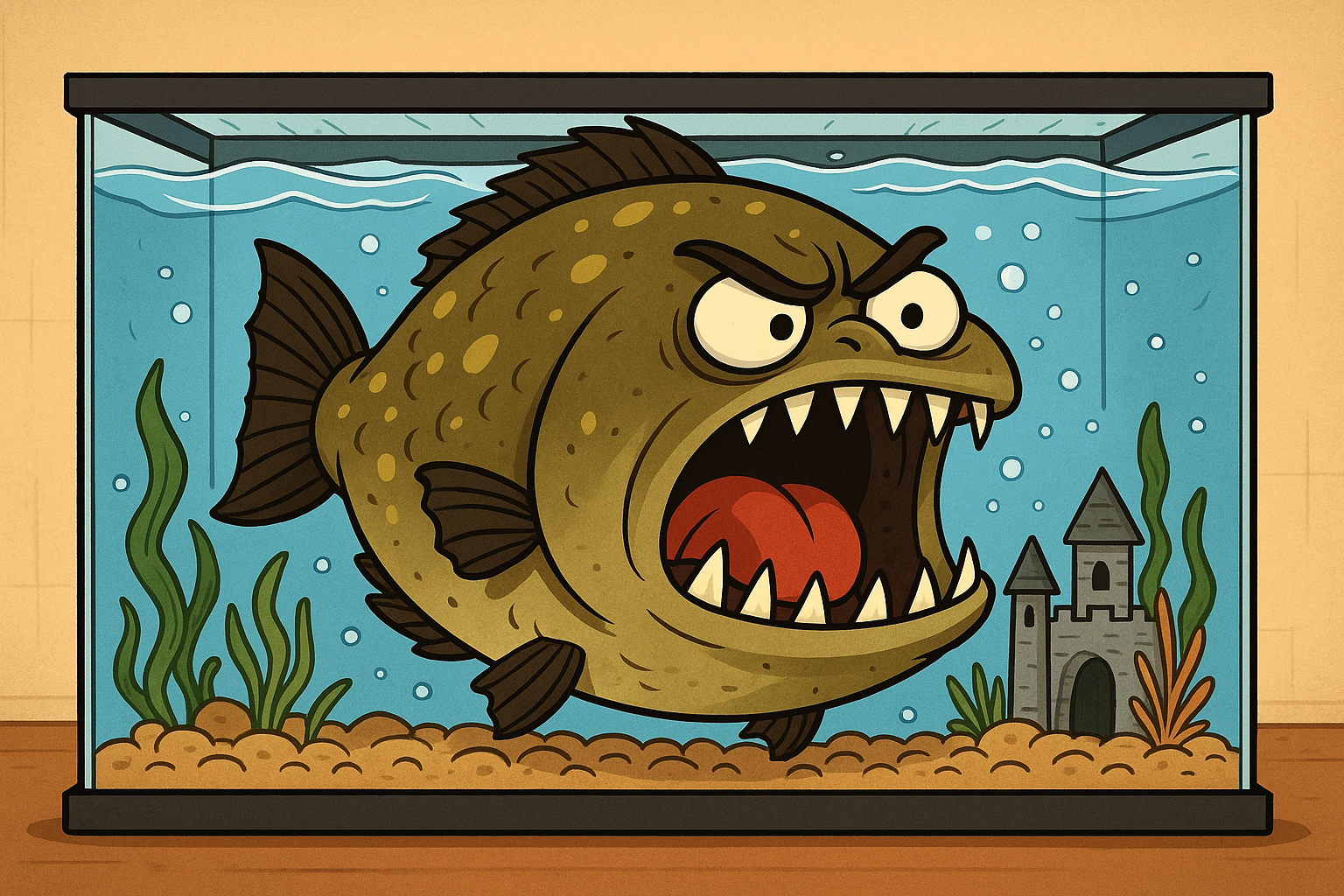Caring for Monster Aquarium Fish
🐟 Caring for Monster Aquarium Fish
🏠 Tank Size & Setup
🏋️ Huge Bodies = Huge Tanks
- Many species hit 30–100+ lbs in captivity.
- Rule of thumb: Start at 200–300 gallons for juveniles → upgrade to ponds (1,000+ gallons) for adults.
- 🔒 Secure lids & braces – Arowanas and gars can launch out.
- 🪵 Décor: Heavy driftwood & rocks, but leave open swim space.
💧 Filtration & Water Quality
💩 Monster waste = monster filtration
- ⚙️ Oversized sumps or multiple canisters – rated far above tank volume.
- 🌊 Strong flow & oxygen – powerheads, DC pumps, airstones.
- 💧 Water changes: 30–50% weekly minimum.
- 📊 Parameters: Keep within natural ranges (e.g., soft warm water for rays, harder for cichlids).
🍽️ Feeding
🍤 Diet
- High-quality sinking pellets (Hikari Massivore, Northfin, etc.)
- Fresh/frozen seafood: shrimp, squid, tilapia, mussels.
- ❌ Avoid live feeders (parasites & aggression issues).
⏰ Feeding schedule
- 🐠 Juveniles: 2–3x daily.
- 🐋 Adults: Large meals every other day.
- Example: A 30 lb catfish may eat several ounces of fish/shrimp per feeding.
🐟 Tankmates & Behavior
⚔️ Predators: Most monsters see smaller fish as food.
👑 Territorial: Cichla (peacock bass), wolf fish, large cichlids.
🤝 Best companions: Other large, equally robust monsters (with caution).
📊 Monster Fish Size & Weight Examples
| 🐠 Species | 📏 Max Length | ⚖️ Max Weight | 📝 Notes |
|---|---|---|---|
| 🐉 Silver Arowana | 3–4 ft | ~15 lbs | Powerful jumper, must have lids. |
| 🌑 Black Arowana | 3 ft | 12–14 lbs | Similar to silver, rarer. |
| 🥥 Pacu | 3–4 ft | 50–60 lbs | Plant/fruit eater, strong jaws. |
| 🐱 Redtail Catfish | 4–5 ft | 80–100 lbs | Outgrows most tanks, pond fish. |
| 🐯 Tiger Shovelnose Cat | 3–4 ft | 40–50 lbs | Sleek predator, lightning fast. |
| 🐟 RTC x TSN Hybrid | 4+ ft | 100+ lbs | Popular but extremely huge. |
| 🐡 Freshwater Stingrays | 2–3 ft disc | 20–50 lbs | Sensitive, venomous barb. |
| 🎣 Alligator Gar | 5–6 ft (captive) | 100+ lbs | In wild, >200 lbs; often restricted. |
| 🐊 Florida Gar | 2–3 ft | 10–15 lbs | More manageable gar. |
| 🎨 Peacock Bass (Cichla) | 3 ft | 25–30 lbs | Aggressive predator. |
| 🐺 Wolf Fish | 2.5–3 ft | 20–25 lbs | Best kept alone, brutal predator. |
| 🐋 Arapaima | 6–8 ft (captive) | 200–300 lbs | Illegal in many areas, pond-only fish. |
🏥 Health & Safety
🔥 Equipment danger: 60+ lb catfish can smash heaters & filters.
🩸 Keeper safety: Stingray barbs, wolf fish bites, gar teeth.
🔌 Power outages: Use backup air pumps or generators—large fish suffocate fast.
🧰 First aid: Keep medications ready for scrapes, parasites, and HLLE (common in big fish).
🧑🔧 Extra Considerations
🕰️ Growth planning: A 3-inch “baby” redtail cat may hit 3 feet in 3 years.
🚚 Transport: Moving a 50+ lb fish often requires 2–3 people + oxygenated tubs.
⚖️ Legal issues: Many states ban piranhas, arapaimas, snakeheads, etc.
